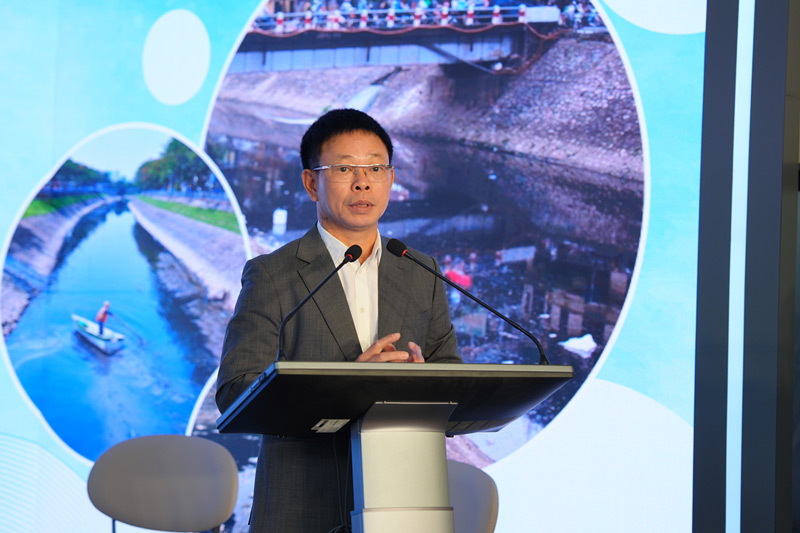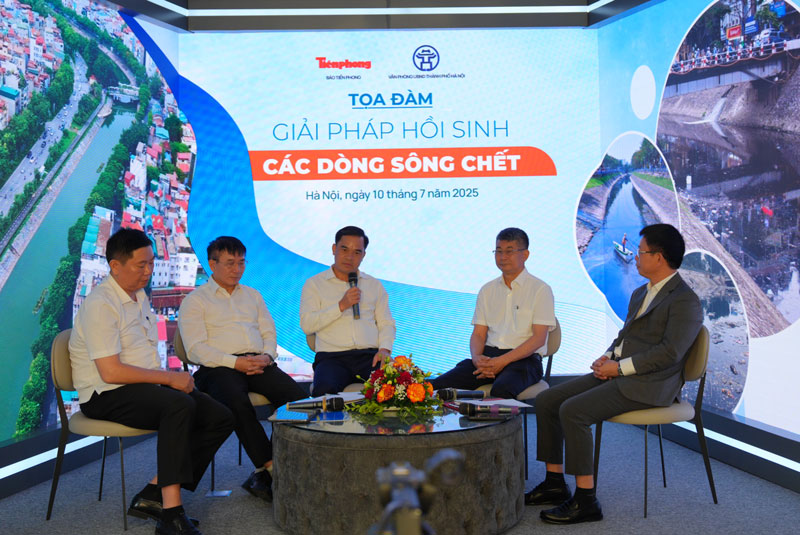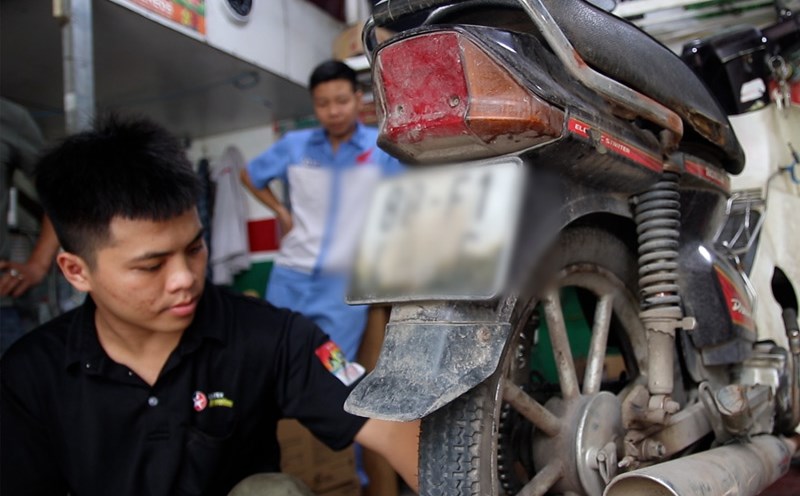On the morning of July 10, Tien Phong Newspaper coordinated with the Office of the Hanoi People's Committee to organize a Seminar on Resuscitation Solutions for dead rivers to find feasible, effective and practical solutions when implementing the policy of reviving rivers.
Participating in the seminar were Mr. Nguyen Hong Hieu - Deputy Director of the Department of Water Resources Management; Prof. Dr. Tran Dinh Hoa - Director of the Vietnam Institute of Irrigation Sciences; Dr. Hoang Duong Tung - former Deputy Director General of the General Department of Environment; expert Nguyen Truong Duy - Vietnam Association of Dams and Water Resources Development; Mr. Tran Dang Anh - Deputy Director of the Department of Agriculture and Environment of Hung Yen...
Speaking at the seminar, Mr. Phung Cong Suong - Editor-in-Chief of Tien Phong Newspaper - said that the urbanization process is one of the causes of river pollution, causing the rivers in the capital to seriously degrad. Currently, To Lich River, Set River, Lu River, Kim Nguu River are degraded and odor-prone, not only affecting the landscape, but also related to health problems.
The Editor-in-Chief of Tien Phong Newspaper also emphasized: "In recent times, Hanoi has made many efforts and solutions to replace water sources, sanitize To Lich River and polluted rivers. Hanoi has also coordinated with international organizations and non-governmental organizations to treat water resources for rivers such as: Drainage project phase 1, phase 2, construction of Yen Xa wastewater treatment plant... contributing to improving the environment of rivers.
These solutions have more or less had results, but overall, solutions that are systematic, synchronous, and more connective are still needed to control water flows".

Also at the seminar, Mr. Nguyen Hong Hieu - Deputy Director of the Department of Water Resources Management - said that Vietnam currently has about 3,450 rivers, distributed over three large river basins and coastal river areas.
Under the pressure of the socio-economic development process, many rivers in our country are polluted at different levels, especially in the central and downstream areas - where there is a high population density and many production and urban activities.
Mr. Nguyen Hong Hieu said that the current river pollution comes from many causes such as: urban wastewater reaches more than 9 million m3/day but is only about 17% treated; wastewater from industrial parks and craft villages is still treated by many small production facilities, causing high risk of pollution; the use of chemical fertilizers, pesticides, and animal feed without control causes chemical residues in the water environment; people's awareness is still limited when they dump solid waste haphazardly into river and lake systems; along with the impact of climate change such as prolonged drought, heavy rain causing flooding, causing pollution to accumulate and increase.

In the discussion and discussion session on solutions to revive dead rivers, Prof. Dr. Tran Dinh Hoa - Director of the Vietnam Institute of Water Resources Research - said that solving the problem of pollution, degradation, and depletion is not unique to any locality. Localities must start to cooperate to solve this problem, not only in localities where rivers flow through but also in all relevant localities that need to link up to find comprehensive solutions.
"Rregional linkage is not only about irrigation and natural disaster response issues, but also about drastic wastewater treatment related to the river system," said the Director of the Vietnam Institute of Water Resources and Environment.











